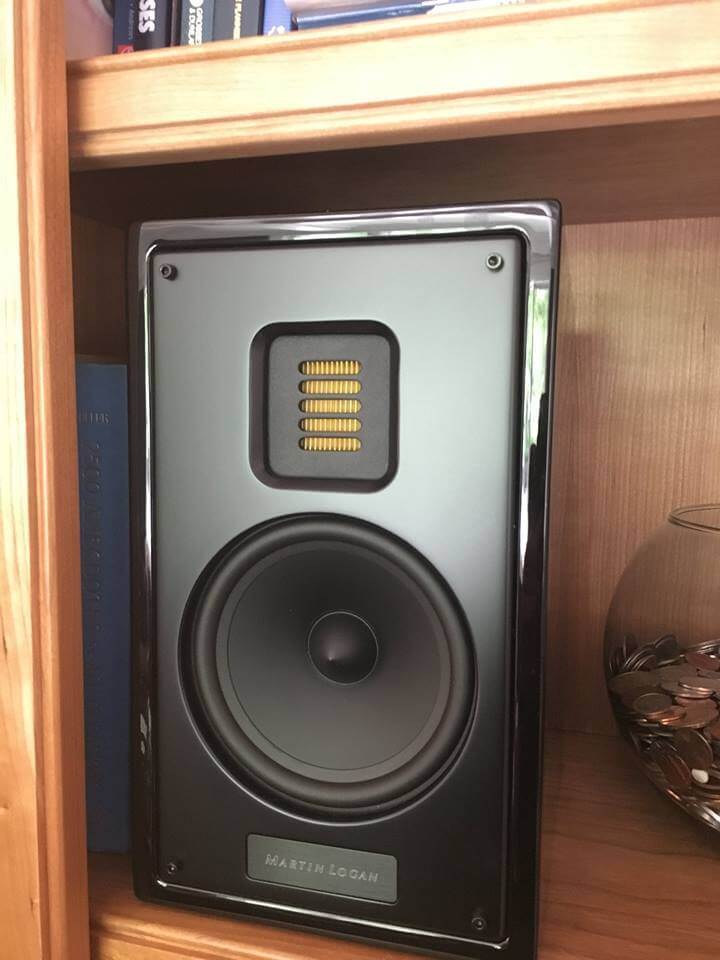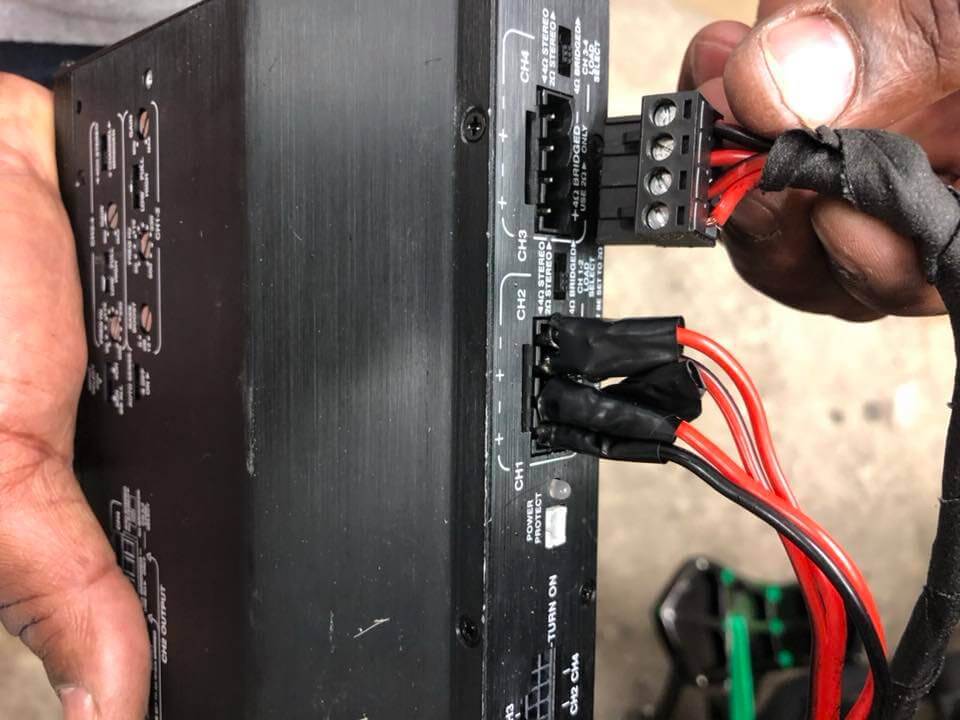Being an audiophile, I have had to help a lot of friends and colleagues regarding the phase issue. It is actually pretty common than you might think, and it has happened in their car speakers, home theater speakers, or their regular speakers.
It is basically when the noise coming out of the speakers is not accurate or aligned; the sound is generally supposed to feel centered, but it’s not. In an out-of-phase setup, the sounds will either come disproportionately from all sides or from one angle. This can happen if you want to custom-build your setup or modify pre-owned setups; sometimes, it is also not your fault.
How do I identify if my speakers are out of phase?

You need to remember two things to identify if your speakers are out of phase. One is if the sound coming from the speaker channels is coming equally at the same time, and the other would be if the sound coming out of the speakers comes in different waveforms or not. By waveforms, I mean if the sound is coming equally at the same pace from all sides.
A different example: Often in various surveillance towers, if you notice that you’re hearing a lot of distortions coming from the radio, the voice coming out of the daily news you hear is somewhat unclear, then I believe the sound coming out of the surveillance towers that are used to play radios and walkies-talkies are out of phase. A simple understanding to fix that issue would be to match the wavelengths of the sound.
Now, as for your speaker setup, based on my observation and experience, I believe there are a few main reasons to see what’s wrong quickly.
Wrong Speaker Positioning
You could have a large speaker setup, like a 7:1 setup, where you have speakers left and right, above and under, while keeping the subwoofer at the center. You need to be careful about this scenario because you could have speakers facing each other, another speaker facing the wall, or another speaker needing to have the wires plugged in correctly.
You need to bear in mind that for sound to come, it requires time, so all of the speakers need to be at an equidistant position so that all the sound coming out of the amplifier is clear and aligned.
Wires Misplaced
Speakers usually have two nodes one is a positive node, and the other is a negative node. More often than not, in the current speakers, the positive and the negative end are shown, but there are quite a few speakers that don’t show the positive or the negative ends.
If it doesn’t, then the usual way to identify is through cross-checking with the wires by knowing the colors of the wires.
Positive End: Red, Blue, or Green colored wires.
Negative End: Black, Yellow, or Silver colored wires.
If the initial try doesn’t give any phase and opposite polarity noise, then simply change the wires, and you should be good to go.
Note: The + and – is usually just above the grounding of the wires, so that’s your cue in understanding what’s wrong.
Busted Speaker Bass

The key to identifying this is by playing an extremely loud, bassy song and noticing if there’s any difference in the beats coming out of the speakers. If you notice any sort of disparity in the bass of the speakers, then it is most likely because of phase.
The speakers have to move out equally to have the right bass. You may tune in your bass of the left and right speakers. If things don’t work, then you have got a phase problem for sure.
Necessary: You may require to disassemble your speakers for this. If you’re not that used to technical stuff, then I suggest you hire a professional. You may also apply for a warranty because disassembling your parts may void your warranty.
Tools Required
- Double AA battery
- Speaker Polarity/Phase tester (The one with a 9-volt battery)
- Phase Checker App (For Android, it’s Polarity Checker, and for Apple, it’s PhaseChecker)
- Speaker Tone Generator
How do you test that your speakers have the wrong polarity or are out of phase?
Now let’s talk about some of the tools we can use to identify out-of-phase speakers or speakers that have the wrong polarity.
Use of a battery
Take a double AA battery that is in good-mint condition and connect the two nodes of the battery. You could also take a higher-volt or AAA battery if you want, but it won’t make a difference. The positive wire with the positive end of the battery and the negative with the negative end of the battery.
If the polarity is accurate, then you will see that if speakers are in the correct polarity, then the sound should move outward, and if it’s in the wrong polarity, then the sound will move inward.
Use of Phase tester

If you have your speakers mounted and you don’t have the ability to remove and test them completely. Then you can use a phase tester to check the phase of the speaker.
Simply put the phase tester near the speaker, if the phase is correct, then the green light will be shown, and if the phase is incorrect, then a red light will be shown.
And, if you have managed to take out your speaker, then you can use Speaker Tone Generator; the extra will be, of course, to connect the positive with the positive wires and the negative with the negative wires to understand the polarity.
Use of the app
This is also similar way like the phase tester. For this, you may need to get a type-c to 3.5mm headphone jack for android users and a lightning port to 3.5mm headphone jack for apple users. But, if you’re using an old phone, then you won’t be needing these as those phones will have a headphone jack.
Simply connect the headphone jack with the adapter to your phone; the app should have a beep-beep noise. If it shows +, then it will be in phase, and if it displays -, then it will have an outer phase.
For your clarity: Do a Phase Test through listening.
I will be attaching a video so that you understand how to test your phase once you are done fixing things.
In Phase Centered: The sound will be equidistant from all parts and is easily traceable.
Out of Phase: The sound is unclear, distorted, and hard to trace.
Left Side: The sound is only coming from the right side.
Right Side: The sound is only coming from the left side.
Frequently Asked Questions (FAQs)
What’s the difference between polarity and phase?
Ans: Since we have discussed so much about these two things. So, it is normal for you to think these two are the same thing. Well, they are not the same thing, but they are somewhat relatable to each other. For polarity, it is basically making sure the nodes are connected positively and negatively to produce the exact sound, whereas phase ensures the sound is coming at the right time. For speakers to be in phase, the polarity needs to be accurate. So, you must talk about one of them before you can skip the other.
How do Sine Waves play a role in the understanding phase?
Ans: To understand phase mathematically, you can use Sine Waves through the alignment of the two Waves. The waves are measured with degrees (Uptp 360 degrees). So, for the sounds to be ideally in phase, the sinewaves must move equally. To understand if there’s reverse polarity, then the waves will have a 180-degree polarity difference.
Are phase and polarity used in any musical departments?
Ans: Often, to remove noisy parts of the music or make it noise canceled, there are certain ways positive and negative polarities are reversed in making the music inside a studio. And often, capturing the same music from different sources can cause phasing. To remove this lag, phasing itself is used to remove the difference in phase.
Wrap Up!
Thus, I hope you have enjoyed your time getting enlightened in knowing if your speakers are out of phase, the whys, the hows, and the whats regarding it. I have tried to cover the main reasons behind it, how you can test your speakers, to even explain the science behind it by briefly discussing Sine Waves in the FAQ section. After this, I hope you will not be confused about whether your speakers are out of phase or not. Simply put, all you need to do is connect the positive and negative wires correctly to keep your speakers in phase.
Thank you for your time!
